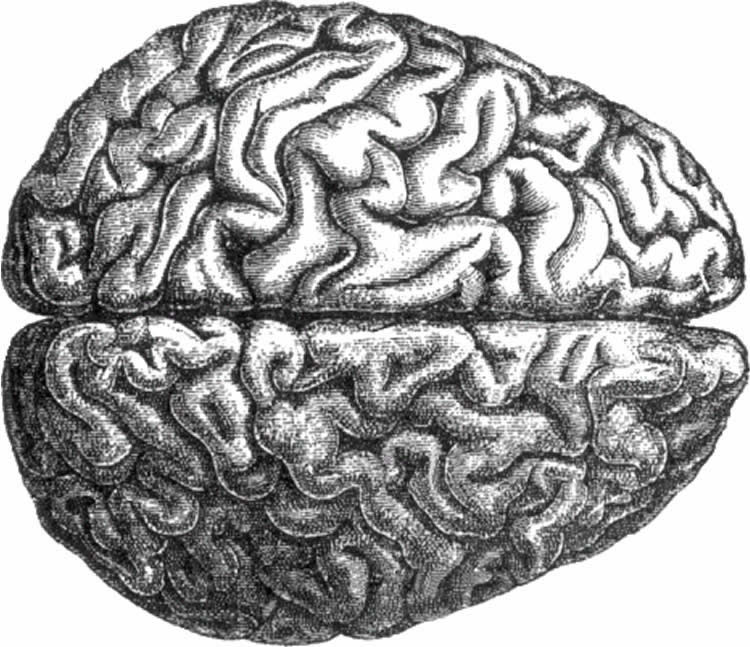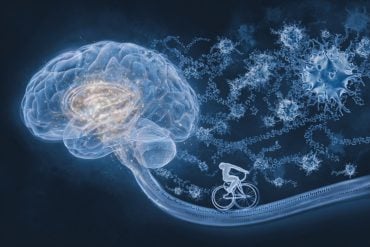UNSW Australia scientists have shown that complex human brain activity is governed by the same simple universal rule of nature that can explain other phenomena such as the beautiful sound of a finely crafted violin or the spots on a leopard.
The UNSW team has identified a link between the distinctive patterns of brain function that occur at rest and the physical structure of people’s brains.
“It has been a mystery why these spontaneous patterns of brain activity occur when people are simply lying in a brain scanner not thinking about anything in particular and not doing any explicit task,” says senior author UNSW psychologist Associate Professor Joel Pearson.
“Our study provides the first over-reaching theory which can explain this. Using the maths of a ubiquitous natural phenomenon – harmonic waves – we have shown how resting brain function is related to the shape of people’s brains.
“The approach we developed also provides a new technique for analysing the enormous amount of data being generated on brain activity.
“And it could lead to a new way to diagnose disorders of consciousness by helping us understand the very complex patterns of brain activity associated with being aware and sentient.”
The study, by Dr Selen Atasoy and Associate Professor Pearson of the UNSW School of Psychology and Isaac Donnelly of the UNSW School of Mathematics and Statistics, is published in the journal Nature Communications.
The researchers used data from two imaging techniques – magnetic resonance imaging (MRI) and diffusion tensor imaging (DTI) – to build three-dimensional maps of the structure of the brains of ten people.
“The MRI gave us the structure of their cortex – the wrinkly surface of the brain – and the DTI gave us an anatomical map of the underlying connections of the white matter in the brain,” says Associate Professor Pearson.
The team then analysed these brain maps using the mathematical framework of Laplace Eingenmodes, or harmonic waves, which describe natural vibrations of a system where all parts move together at the same frequency.
“Our results show the shape of the brain matters, in the same way that the precise wooden shape of a Stradivarius violin matters if you want to produce an exquisite sound when the strings are vibrated,” says Associate Professor Pearson.

“Brain activity resonates within the precise anatomical structures of the brain to produce the resting networks of oscillations we observe.”
Says lead author UNSW’s Dr Selen Atasoy: “The patterns we predict with the harmonic waves on the human brain can be compared to the musical notes composing a complex musical piece; the building blocks of more complex patterns of brain activity.”
Says Associate Professor Pearson: “Interestingly, the same kinds of harmonic waves are thought to explain other self-organising phenomena in nature, such as the patterns that sand forms when sitting on a vibrating metal plate, or the development of biological patterns such as the stripes on tigers and spots on leopards.”
Source: Deborah Smith – University of New South Wales
Image Source: The image is in the public domain
Original Research: Full open access research for “Human brain networks function in connectome-specific harmonic waves” by Selen Atasoy, Isaac Donnelly and Joel Pearson in Nature Communications. Published online January 21 2016 doi:10.1038/ncomms10340
Abstract
Human brain networks function in connectome-specific harmonic waves
A key characteristic of human brain activity is coherent, spatially distributed oscillations forming behaviour-dependent brain networks. However, a fundamental principle underlying these networks remains unknown. Here we report that functional networks of the human brain are predicted by harmonic patterns, ubiquitous throughout nature, steered by the anatomy of the human cerebral cortex, the human connectome. We introduce a new technique extending the Fourier basis to the human connectome. In this new frequency-specific representation of cortical activity, that we call ‘connectome harmonics’, oscillatory networks of the human brain at rest match harmonic wave patterns of certain frequencies. We demonstrate a neural mechanism behind the self-organization of connectome harmonics with a continuous neural field model of excitatory–inhibitory interactions on the connectome. Remarkably, the critical relation between the neural field patterns and the delicate excitation–inhibition balance fits the neurophysiological changes observed during the loss and recovery of consciousness.
“Human brain networks function in connectome-specific harmonic waves” by Selen Atasoy, Isaac Donnelly and Joel Pearson in Nature Communications. Published online January 21 2016 doi:10.1038/ncomms10340






